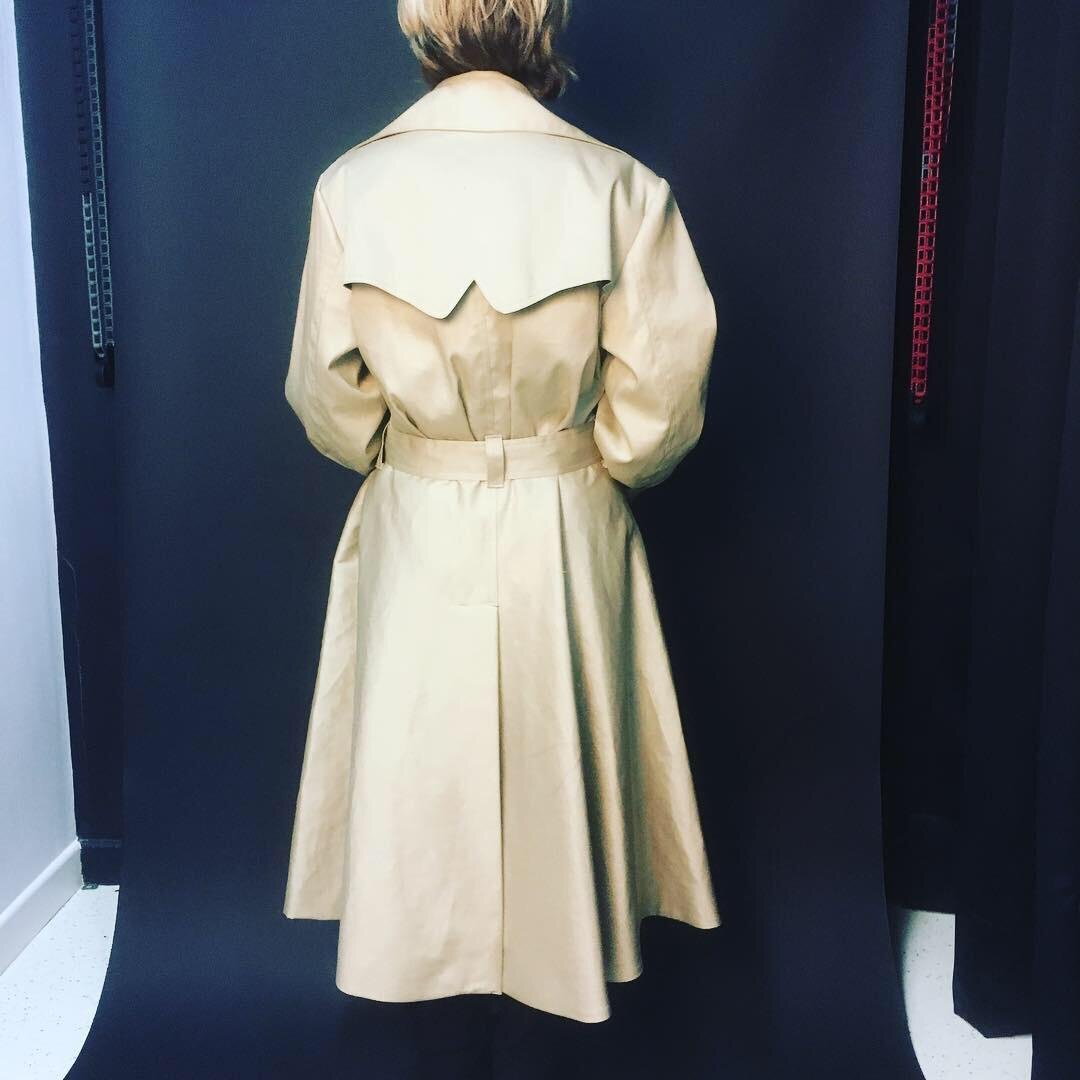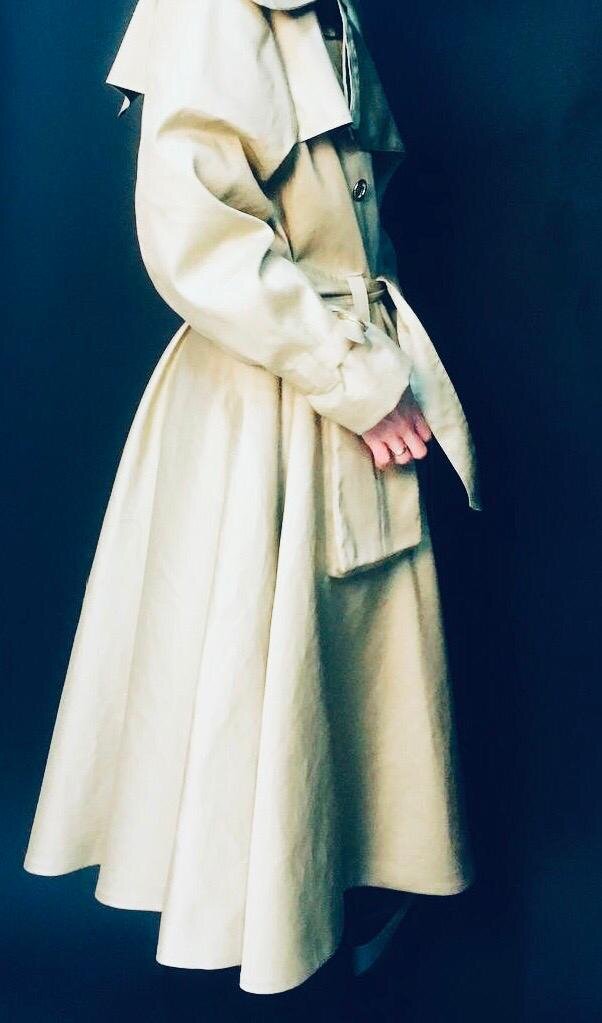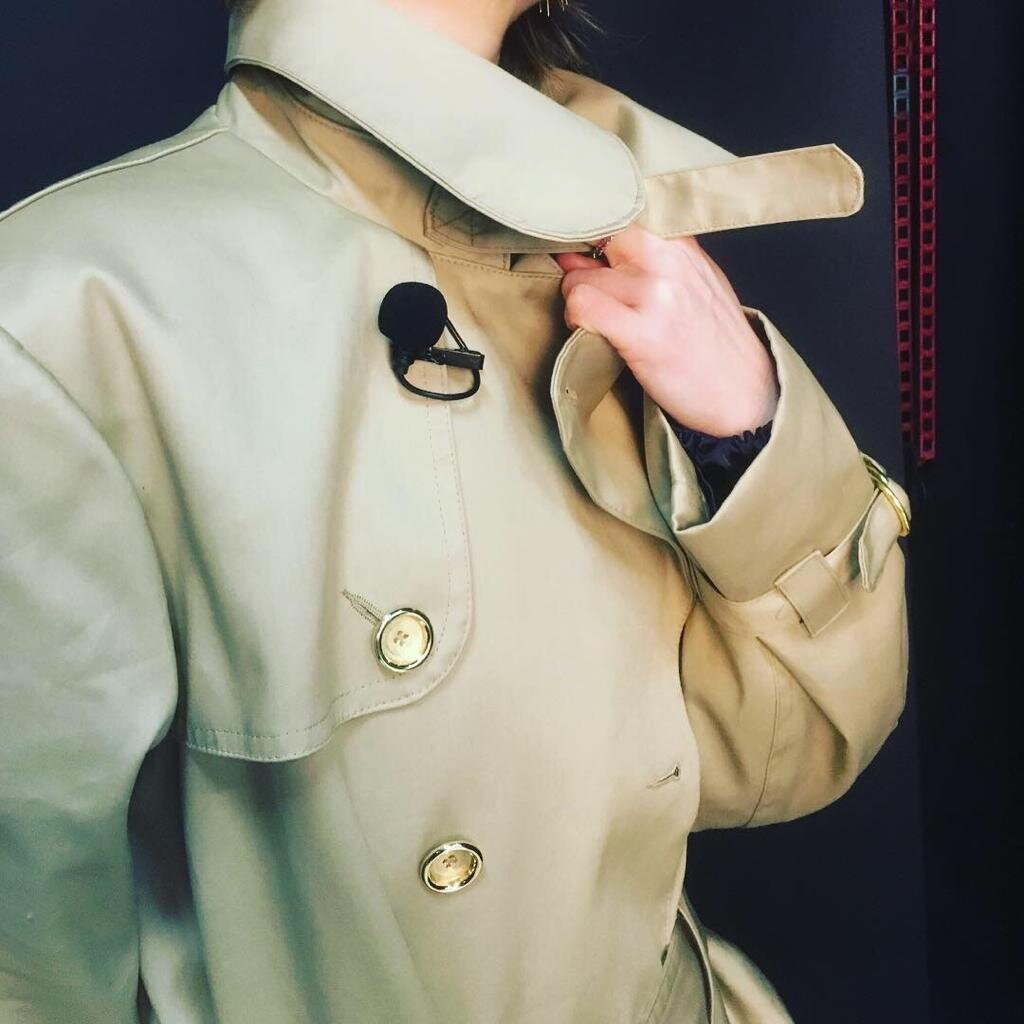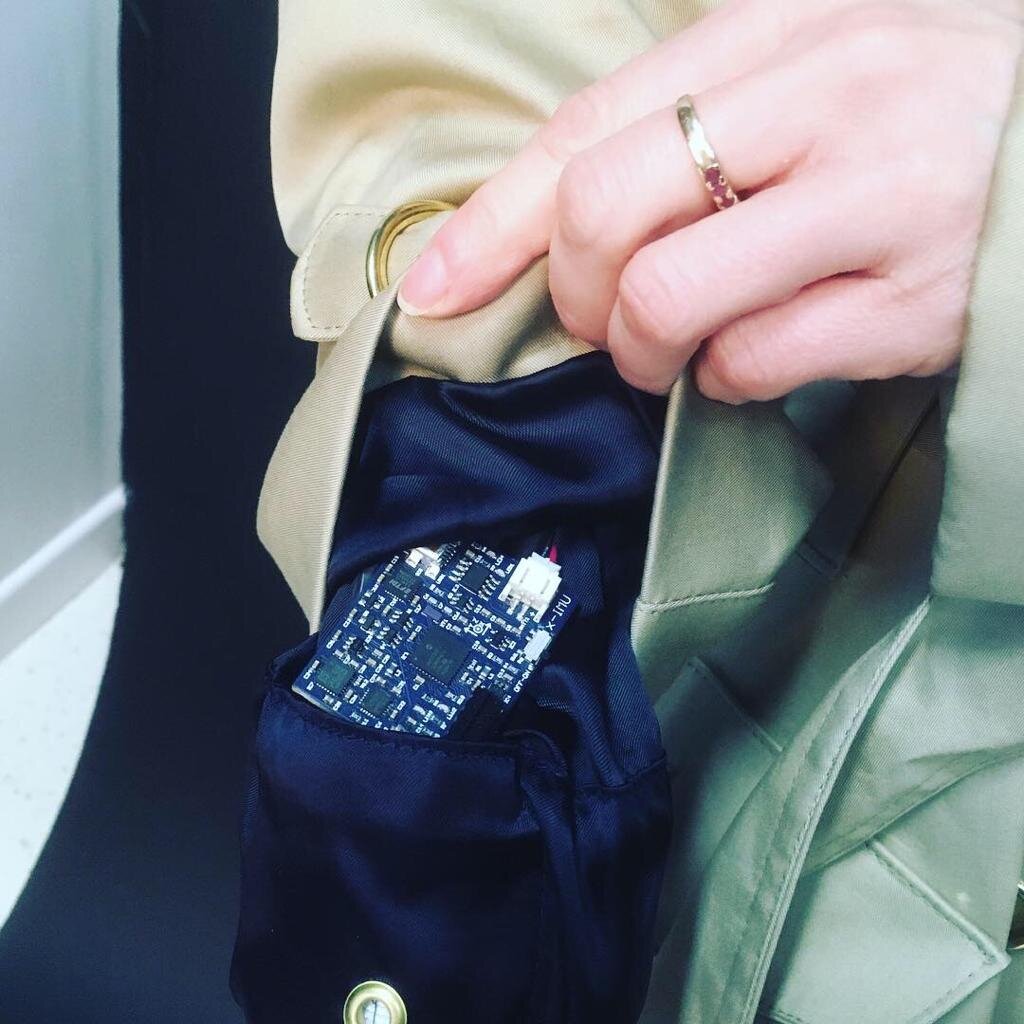Fashioning The Voice
“This technologically enabled trench coat is more like a technicolour dream coat, a figment of your imagination spun into real life, a rainbow of possibility that stretches from your body to the rest of the world.”
Writer Mary Paterson, December 2020
Fashioning the Voice is an interdisciplinary arts project developed in collaboration by Jennifer Anyan, Yvon Bonenfant and Tychonas Michailidis. It is a singing trench coat exploring self-identity through how we fashion ourselves, how we fashion our voice and how the two influence each other.
We have just finished an R&D phase of the project, which was supported by Arts Council England and Solent University. This support has enabled us to test the coat with different participants, refine the garment design and work towards planning a final production template.
Our findings from our R&D process include:
Huge potential to experiment with songs, poems and whole linguistic groups to create experiences around interculturality and vocality.
The coat can be made to feel like ‘it’ is transforming voice, instead of movement. We didn’t want the experience to feel akin to using a gaming controller. We lifted the experience to a place of magic and exploration.
Working through the language of fashion helps to breakdown barriers and enable discussion of complex issues around identity and gender.
We have found that the tactile experience of the coat is very important to participants and in further development broadening the range of materials used within the coat and environment will further enhance how individuals respond, touch and move.
The project like so many was affected by Covid-19 and until the pandemic has eased the project is on hold.
We predict that after the crisis there will be huge appetite for artwork that involves voice and contact allowing people to imagine alternative futures for themselves, their bodies and their expressive power. Fashioning the Voice has the ability to capture this celebratory mood. It gives agency to the participant. Using their own voice or choosing someone else’s they shape and reshape the coat and together they fashion themselves into the imaginary people they want to be. Read a critical text by Mary Paterson.
We are looking for visual art and fashion partners to work with us to develop Fashioning the Voice further. Will you come with us and explore “who we might be tomorrow”?
Background context
Fashioning the Voice began in 2016 emerging out of conversations between initial collaborators Jennifer Anyan and Yvon Bonenfant who set out to explore synergies between their practices. Anyan’s work explores embodiment and experiences of fashioning the body whereas Bonenfant’s work is preoccupied with how we style the voice. These early conversations and explorations focussed on practical connections between these two situated bodily practices. As the project developed Tychonas Michailidis joined the collaboration bringing his expertise in the application of haptic technologies, daring music composition and versatile coding. His interests as an artist and researcher connect into the project through hand gestures and the way they interactively and creatively control and manipulate the artistic outcome.
Artistic ideas
The voice emerges from our vibrating vocal folds, and then our responsive and malleable vocal tract sculpts the sounds that emerge. This process is dependent on a wide range of variables such as: biological, emotional, cultural and contextual and as such, it is ever in flux, under a strange combination of conscious control, unconscious learned habits, physical limitations and potentials – we do fashion our sound – even if we are oblivious to ourselves doing it.
Fashioning the Voice amplifies the ‘fashioning’ process. The singing coat ‘makes’ voice, shapes voice, and projects voice; it literally vibrates with voice. It echo’s and resonates with the agency we choose to use, shape and move in clothing – grounding it in a dialogue between the ‘biological’ (or more fixed) aspects of embodiment and the tactile, visual and choreographic qualities of clothing. Using ‘voiced’ clothing we stage identity and mark a marginal space that can be played with (Kaiser 2001).
For contextual and academic references please visit: https://www.researchcatalogue.net/view/551062/551063
How the coat works
A microphone is positioned on the collar of the coat to capture the voice of the participant or we can work with a recorded voice. We have different sensors built into the coat to gather data from the body’s interaction including: two inertial measurement unit (IMU) sensors on the left and right hand for an accurate orientation of the hands. An IMU sensor at the bottom of the coat to measure movement of the whole body and light sensor on the collar. Pockets are lined with conductive stretch fabric sensors that gather data from stretching the fabric; as the participant pushes their hands into the pockets they can hear the pocket space respond. As the participant moves (lifting arms, rotating wrists, spinning around or lifting the collar) we capture this data and use real time audio manipulation to send the voice cascading back out of the coat. We can further experiment and manipulate in real time by controlling how different movements affect the sound of the voice – changing tone, pitch, volume and echo – the options are endless. We can even play around with the facility to record and playback audio.
The following sensors are used within the coat:
Light sensor (Phidgets Light Sensor 70,000 lux) – placed under the right collar to allow the participant to experiment with the position of the collar and allow light into the sensor.
IMU sensor (NGIMU and x-BIMU) – there are two NGIMU, one on each sleeve and one x-BIMU sensors at the bottom of the coat. These sensors capture hand gesture and movement from the participant as well as whole body movement.
Stretch fabric sensor (EeonTex Conductive Stretchable Fabric) – reacts when hands are placed in the pockets.
x-OSC board – powers the sensors and establishes a WIFI connection with the computer for transmitting the data.
Funders
Arts Council England Project Funding
Southampton Solent University and the Solent Gallery
University College Cork












